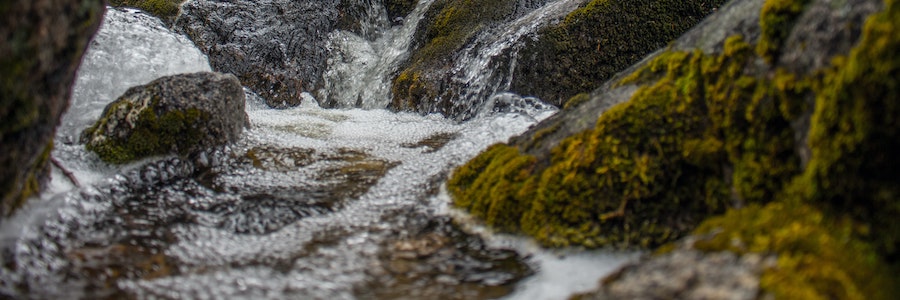The atmospheric rivers that drenched California and the rest of the Western U.S. were desperately needed and welcomed, particularly by those in agriculture, but the reality is the precipitation will only provide a temporary break from the two-decades old drought.
The most-recent U.S. Drought Monitor shows much of California, Nevada, Idaho, Montana, Utah and Oregon remains in moderate-to-extreme drought conditions. The report’s authors said the recent rains and snow have placed much of the Western U.S. in a “holding pattern” rather than significantly improving drought conditions. Reservoirs are refilling but a very small amount of rainwater is seeping through the ground and recharging aquifers, which is critical in order to recharge the groundwater.
A recent (conducted before the heavy rains) survey by the American Farm Bureau Federation is the best picture I’ve seen to date about the seriousness of the drought and its ongoing impacts. A whopping 74% of growers reported a reduction in harvest yields due to the drought and two-thirds of respondents involved in animal agriculture reported selling off portions of their herd or flock, with average herd sizes estimated to be down 36%. These ongoing impacts might be slightly blunted by the recent atmospheric river storms but like the authors say in the recent U.S. Drought Monitor report, much of the Western U.S. remains in moderate-to-extreme drought.
The reality is that west’s water resources, most notably the Colorado River Basin, continue to decline and are reaching a point where excruciating public policy and production decisions are going to have to be made because the tension between the water needs of urban and suburban communities and the needs of farmers and agriculture continue to be on a collision course.
The Colorado River Basin is a region that encompasses Arizona, Colorado, New Mexico, Utah, Wyoming, Nevada and California, which is the leading food-producing state in the nation and the place where nearly 100% of numerous specialty crops like almonds, walnuts, artichokes, cauliflower, spinach, garlic and more are grown.
Around 40 million people rely on the Colorado River Basin for their municipal water needs. At the same time, 70% of the water from the river is used in agricultural production. This shared usage between municipalities and agriculture has worked fine in the past but in drought it’s a prescription for conflict between community water use – urban and suburban residents – and agriculture use.
Welcome to the conflict between urban and suburban water users and usage and agriculture use. It’s where we are today, despite all the precipitation from the recent atmospheric river storms, and it isn’t going to end anytime soon.
The US Department of the Interior Bureau of Reclamation is forecasting water demand in the Colorado River Basin will outstrip supply by about 2040. Because of this, In the intervening 17 years major changes in water conservation and usage are going to have to be made.
On the agricultural side of the equation producers are increasingly recognizing this reality and are aggressively working to conserve water as well as looking for new ways to do so.

There’s also a major effort going on to discover and grow new crops that are drought tolerant.
Americans don’t do scarcity very well and community residents in the Western U.S. don’t seem to feel that farmers and ranchers deserve more water than the 70% that’s already used, even though most realize that water scarcity plays a part in the cost of food.
Some of the problem historically is due to a Byzantine system of water rights dating back a century which governs who has priority access to the water in the Colorado River Basin. This system has deteriorated so much though that now the U.S. Bureau of Reclamation has stepped in to attempt to mediate a major water-use reduction plan for the entire region. So far it isn’t working.
The fact is water has become a scarce resource in the Western U.S. As such, the old rules and systems no longer work. Instead it’s a brand new world when it comes to water use in the region. And because California and the west produce so much of the food Americans need, finding a solution in the near-term is crucial.
It’s doubtful we can conserve our way out of the problem. Conservation, even with innovative new ways and technology, isn’t going to be enough.
Drought tolerant crops won’t be enough either, although we need to redouble our efforts in this area, including putting the best and the brightest at our agriculture universities to work in an aggressive way.
A few years of rain like what we experienced in January and February would surely help but praying for heavy rain, just like conservation and innovation like coming up with drought-tolerant crops, isn’t going to be enough.
What’s needed instead are major changes to the water allocation system. It’s a public policy issue that our federal and state political leaders need to seriously address now. I don’t know the answer but what I do know is that the changes ahead are likely going to reshape agriculture in the Western U.S. and as a result will have a significant impact on the global food supply and supply chain.
My Job Depends on Ag Magazine columnist and contributing editor Victor Martino is an agrifood industry consultant, entrepreneur and writer. One of his passions and current projects is working with farmers who want to develop their own branded food products. You can contact him at: victormartino415@gmail.com.







